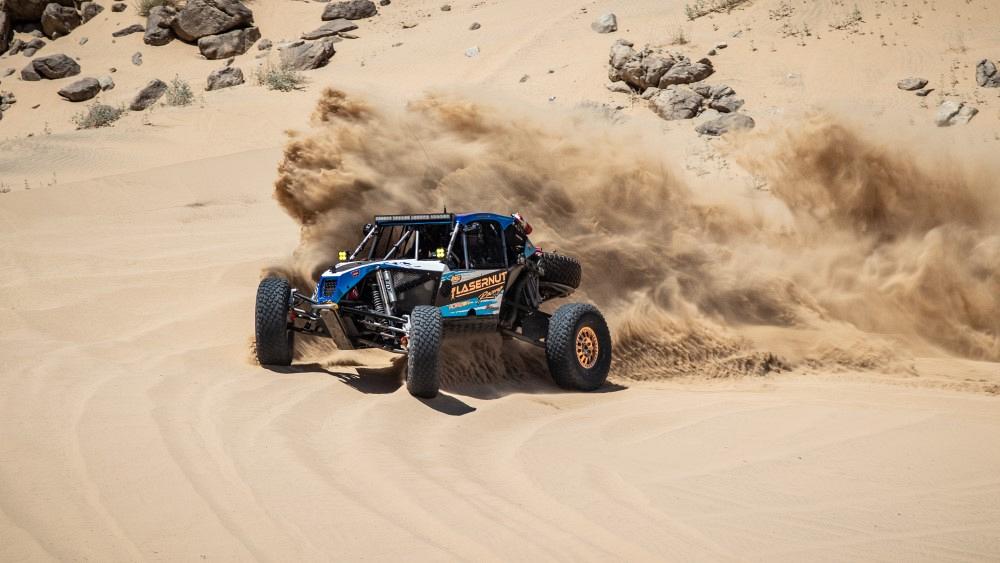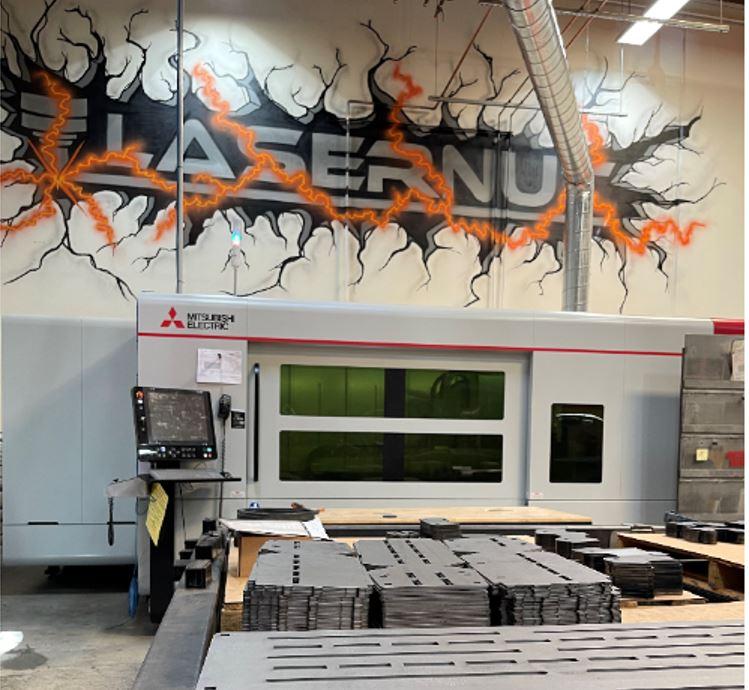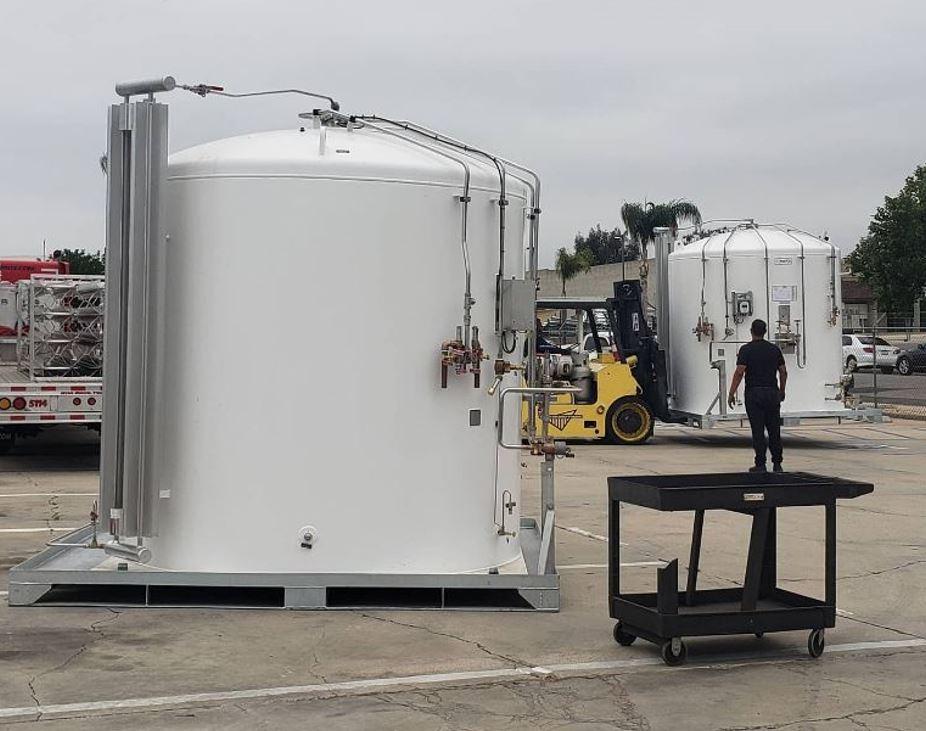Editor-in-Chief
- FMA
- The Fabricator
- FABTECH
- Canadian Metalworking
Categories
- Additive Manufacturing
- Aluminum Welding
- Arc Welding
- Assembly and Joining
- Automation and Robotics
- Bending and Forming
- Consumables
- Cutting and Weld Prep
- Electric Vehicles
- En Español
- Finishing
- Hydroforming
- Laser Cutting
- Laser Welding
- Machining
- Manufacturing Software
- Materials Handling
- Metals/Materials
- Oxyfuel Cutting
- Plasma Cutting
- Power Tools
- Punching and Other Holemaking
- Roll Forming
- Safety
- Sawing
- Shearing
- Shop Management
- Testing and Measuring
- Tube and Pipe Fabrication
- Tube and Pipe Production
- Waterjet Cutting
Industry Directory
Webcasts
Podcasts
FAB 40
Advertise
Subscribe
Account Login
Search
The new age of smart laser cutting for metal fabrication shops
Lasernut, Norco, Calif., finds that artificial intelligence eliminates complexities of running a machine
- By Dan Davis
- October 4, 2021
- Article
- Laser Cutting

When he was younger, Cody Waggoner spent a majority of his time behind the wheel of rock-crawling vehicles, but today he runs a fab shop—Lasernut—that makes aftermarket parts for these types of vehicles and others used in action sports. Images: Lasernut
When you impress Lasernut, you have done something noteworthy.
Lasernut, one of the larger metal fabricating companies in the Inland Empire area of California, has been laser cutting sheet metal and plate parts since 2007. Today it cuts, bends, welds, and assembles parts over two shifts during the week and over a weekend shift. The company’s largest market is parts for off-road vehicles, where Lasernut President Cody Waggoner cut his teeth as a professional “rock crawler,” a term for racers whose vehicles regularly ride over boulders on hills, not flat stretches of asphalt roads. Lasernut has reached $10 million in annual sales, and it’s about to catch up on a backlog of orders that now spans about two months.
What has impressed the company and its owner? It’s a new 10-kW GX-F ADVANCED Series fiber laser cutting machine from MC Machinery Systems/Mitsubishi Laser that outperforms Lasernut’s older CO2 laser technology by a wide margin.
“It’s mind-blowing. It just works. We put it in, and two days later it was running,” said Waggoner, who is very familiar with forward momentum.
Building a Rock-solid Foundation
Before laser cutting became a family focus, Waggoner’s dad was involved in fabricating conveyorized powder coating systems. He started Industrial Process Equipment in 1984, and eventually moved the company to a 40,000-sq.-ft. building in Norco, Calif., in the mid-2000s.
Around this time, the family knew it needed to make a move to diversify the business. A lot of manufacturing in the region had slowly shifted to overseas sources, and fewer manufacturers meant a shrinking pool for powder coating systems.
“In 2006 we were on the way to a rock-crawling competition, and my dad was talking about diversifying. He said that the way we were going to diversify was that we were going to buy a laser. I said, ‘I don’t know what a laser is.’” He’d learn over the next year. Industrial Process Equipment purchased a 1,500-W CO2 laser cutting machine and got a self-taught education in the finer workings of what was necessary to cut quality parts and keep the machine running.
In 2007 the decision was made to hire someone to seek work for the laser cutting machine. Waggoner stepped forward.
“I said, ‘Well, I’m technically not doing anything right now, so I can do it.’ So, I hopped in my car and started going door to door and making postcards, trying to get work,” he said.
Remember that this was during the Great Recession. The entire economy had slowed tremendously. But Waggoner kept at it and went to where he had some contacts—the rock-crawling community.

The Mitsubishi 10-kW GX-F ADVANCED Series fiber laser cutting machine was installed in Lasernut’s Norco, Calif., facility in summer 2021.
It snowballed from there. People found that Waggoner could supply and deliver laser-cut parts quickly according to their spec, and they kept asking for more. A request for formed parts led the company to purchase a CNC press brake. When the request came for welded parts, the company bought some power sources and hired some welders.
The fabrication business was growing, but it still lacked the name that would tie it all together and stick in people’s minds. Industrial Process Equipment was a name that “just didn’t flow,” according to Waggoner.
“I wanted laser in the name, and I was thinking that people think I’m kind of nutty because of the stuff I do, like rock crawling. I’m like, ‘What about Lasernut?’”
That stuck. Not only can you find the name in a huge mural in the laser cutting area of the Norco facility, but you’ll find it on race cars, rock crawlers, and even trophies fabricated for competitions all over the U.S. The company also actively posts photos and videos on its Facebook and Instagram (@Lasernut and @LasernutRacing) feeds. In a move likely unduplicated in the metal fabricating sector, Lasernut even has a remote control, the Losi Lasernut U4 racer, that can reach speeds up to 50 MPH.
“That was a bucket-list item,” Waggoner said. “If I can get the younger generation to remember Lasernut, when they get older and they start fabricating or building cars, they will come to us and have us do their work.”
The unconventional marketing appears to be working for the metal fabricating company. Lasernut, which has more than 90 employees, is now a shop that can take something as simple as a napkin drawing, develop a model from it, create prints, and bring the part to reality. It has five laser cutting machines, eight press brakes, and three robotic welding cells and offers both gas metal arc and gas tungsten arc welding.
In summer 2021, Lasernut made a more conventional move to new laser cutting technology, which completely changed the dynamics on its shop floor.
Embracing Modern Laser Cutting
Having been involved in laser cutting for more than 15 years, Lasernut is no stranger to its benefits. It had four Mitsubishi laser cutting machines—two 4-kW machines purchased in 2009 and 2010 and two 4.5-kW units purchased in 2013 and 2015—and liked the edges that the CO2 technology delivered.
“We were pretty much kind of just hanging out there for a number of years, trying to decide what’s next,” Waggoner said. As a result, they didn’t rush into the fiber laser technology craze.
One particular worry was the burr that fiber laser cutting technology left on parts. Waggoner recalled visiting a machine tool builder’s showroom and having a salesman present him with a freshly laser-cut part that the salesman called a “production part.” Waggoner said he was surprised by the amount of burrs on the part.

Because the company’s new fiber laser cutting machine consumes more nitrogen than the older CO2 lasers when it is cutting, Lasernut had to more than double the size of the bulk tanks used to store the nitrogen.
“That wasn’t going to work because every part that I would have to touch would have to be sanded or deburred,” he said.
The emergence of the high-powered laser cutting machines, however, was a signal to him, and he knew that the right equipment would make a real difference in Lasernut’s operations. He discovered that with the Mitsubishi GX-F ADVANCED Series fiber laser cutting machine from MC Machinery, which was installed in the Norco facility earlier this summer.
Key to the operation of the new 10-kW laser was its ability to adjust cutting parameters on its own, according to Waggoner. MC Machinery officials said that this is possible because the machine is “AI-enabled.”
“A fiber laser with artificial intelligence can essentially act as its own quality control to prevent the production of bad parts, a common cause of lower profitability,” said Shane Herendeen, MC Machinery’s North American sales manager for fabrication. “When a bad cut is detected through real-time burr detection, the AI-enabled fiber laser makes the required adjustments to improve or regain the cut.”
Herendeen added that the fiber laser cutting machine also can optimize the cutting speed when it detects good processing conditions. It can ramp up the cutting speed at that point, and the machine actually uses less nitrogen the faster it cuts during these optimized settings.
Waggoner said the speed is hard to ignore after years of watching CO2 lasers do their work.
“It’s almost like you have to pinch yourself because it’s just that fast,” he said. “It’s cutting four to 10 times faster than a CO2, and it’s using less electricity.”
It does use more nitrogen gas because it operates at a much faster rate than the CO2, Waggoner pointed out. That’s one of the reasons that Lasernut installed two 7,000-l tanks, replacing two older 3,000-l tanks.
Waggoner is less concerned with the burr that might result with the new fiber laser. “We can live with it, or we can knock it down a little bit,” he said.
Waggoner is specifically referring to the tabs that are necessary to keep parts from flipping up after a cut is made. If a part were to flip up and hit an accelerating cutting head on its way to start another pierce, the resulting collision could shut down the machine and possibly cause major damage.
That’s why Waggoner said Lasernut added a couple of grinders to the company roster. They can break out the part, grind down the tabs, and get it on the pallet for downstream processing.
At the time of the interview in late July, Waggoner said Lasernut had run the GX-F 475 hours over the previous 30 days. That worked out to be about 16 hours per day. The only real downtime was between midnight and 5 a.m., when the shop was closed.
Features like a nozzle monitor keep tabs on the status of the component. If the system’s camera picks up on an issue with the nozzle, an automated change takes place, which minimizes downtime.
Waggoner said such technological advancements have enabled him to get novice laser operators familiar with the new laser cutting machine in a matter of three to four hours. These operators don’t have to worry about mirrors, like those on a CO2 laser. They don’t have to worry about the nozzles. They get the sheet metal into the cutting bed and start the job.
Compare that with the operator’s responsibility level when running a CO2 laser, and you understand how the pressure has been lifted from his or her shoulders. On these modern laser cutting machines, the operators don’t have to inspect and, if necessary, clean the cutting head assembly to remove dirt that has dropped onto the lenses; clean the delivery optics, which could be subject to a film developing on them if, say, liquid nitrogen was used for the bellows purge; and inspect the resonator’s quartz tubes and output coupler, looking for any evidence that the laser power source is not operating as it should. There’s a lot on the plate for that operator to keep track of.
Even with all that, Waggoner still acknowledges that he loves the cut edge that a CO2 laser can deliver when compared to his newest fiber laser. That, however, still doesn’t outweigh the efficiency of the new machine. In fact, the performance of the 10-kW fiber laser cutting machine has created new challenges for Lasernut.
“The bottleneck for us was laser cutting. We couldn’t cut enough to feed the press brakes or the rest of the shop,” Waggoner said. “So now the bottleneck is the press brake area. We’re going to take care of that, and then I’m sure after that it’ll be welding that we need to look at.”
Lasernut does have three more press brakes on order as of this summer. But that won’t be the end of the new technology advancement. Waggoner said he has plans to purchase another fiber laser cutting machine, probably even more powerful than the 10-kW they have now, in the near future. When that happens, Lasernut will have two high-powered fiber lasers operating—and exceeding the output—of the company’s four older CO2 machines. (Lasernut has plans to sell all of its older CO2 lasers. When that happens, Waggoner said he likely will have an additional 5,000 sq. ft. freed up on the shop floor.)
While the metal fabricator still has work to do before it gets its shop floor closer to operating in a more harmonic state—where a job can flow freely without sitting on a pallet waiting to be bent or welded—it has figured out its laser cutting for the time being. It’s made it over one large obstacle and will keep crawling forward until the mission of updating the company’s fabricating technology is complete.
About the Author

Dan Davis
2135 Point Blvd.
Elgin, IL 60123
815-227-8281
Dan Davis is editor-in-chief of The Fabricator, the industry's most widely circulated metal fabricating magazine, and its sister publications, The Tube & Pipe Journal and The Welder. He has been with the publications since April 2002.
Related Companies
subscribe now

The Fabricator is North America's leading magazine for the metal forming and fabricating industry. The magazine delivers the news, technical articles, and case histories that enable fabricators to do their jobs more efficiently. The Fabricator has served the industry since 1970.
start your free subscription- Stay connected from anywhere

Easily access valuable industry resources now with full access to the digital edition of The Fabricator.

Easily access valuable industry resources now with full access to the digital edition of The Welder.

Easily access valuable industry resources now with full access to the digital edition of The Tube and Pipe Journal.
- Podcasting
- Podcast:
- The Fabricator Podcast
- Published:
- 04/16/2024
- Running Time:
- 63:29
In this episode of The Fabricator Podcast, Caleb Chamberlain, co-founder and CEO of OSH Cut, discusses his company’s...
- Trending Articles
AI, machine learning, and the future of metal fabrication

Employee ownership: The best way to ensure engagement

Steel industry reacts to Nucor’s new weekly published HRC price

How to set a press brake backgauge manually

Capturing, recording equipment inspection data for FMEA

- Industry Events
16th Annual Safety Conference
- April 30 - May 1, 2024
- Elgin,
Pipe and Tube Conference
- May 21 - 22, 2024
- Omaha, NE
World-Class Roll Forming Workshop
- June 5 - 6, 2024
- Louisville, KY
Advanced Laser Application Workshop
- June 25 - 27, 2024
- Novi, MI




























